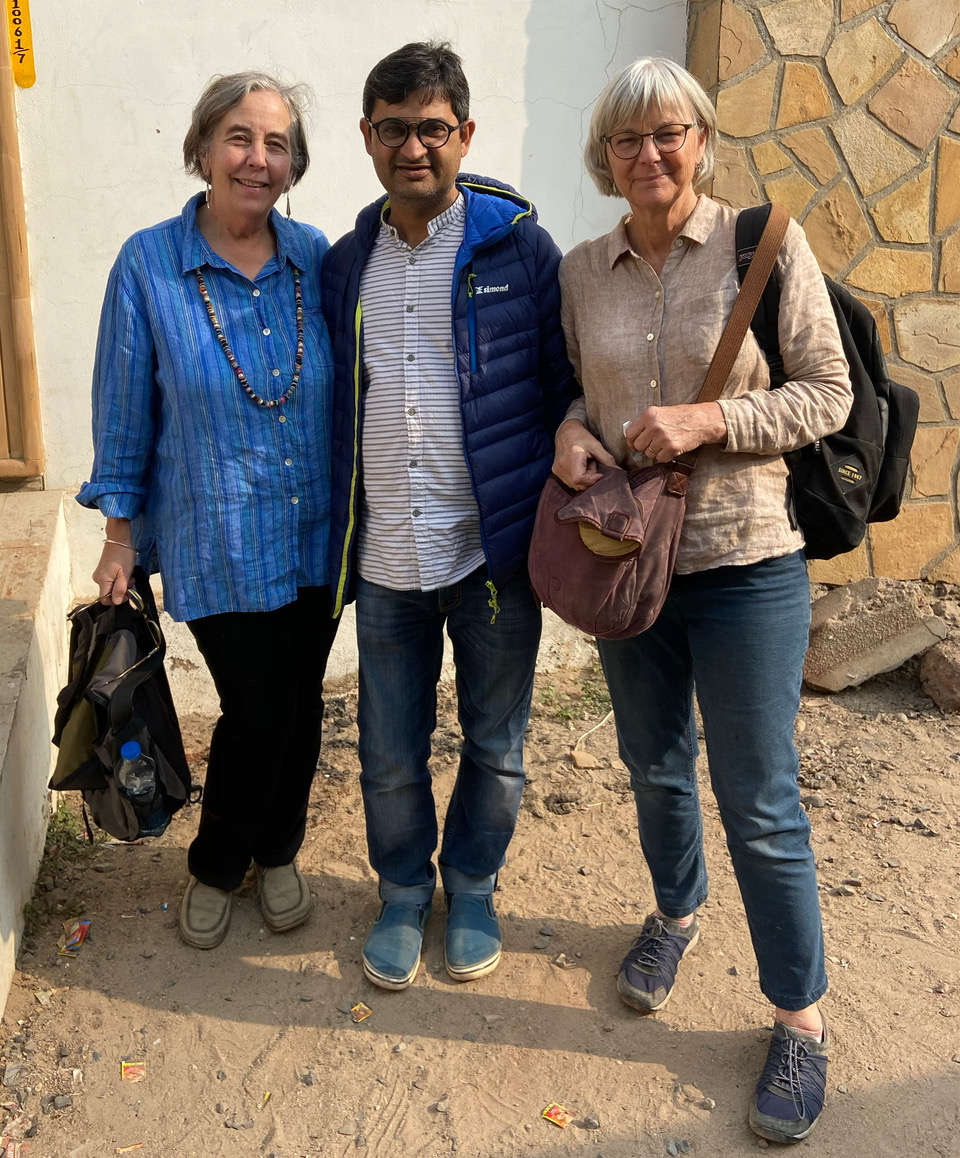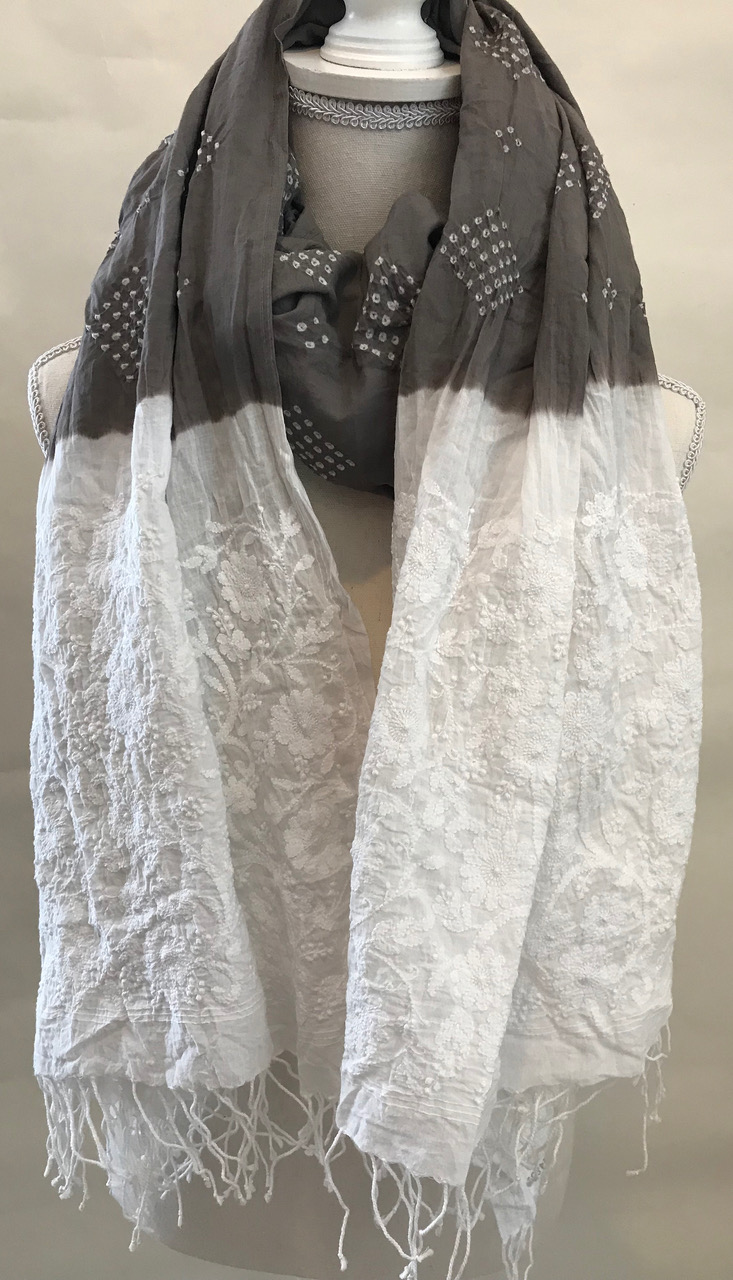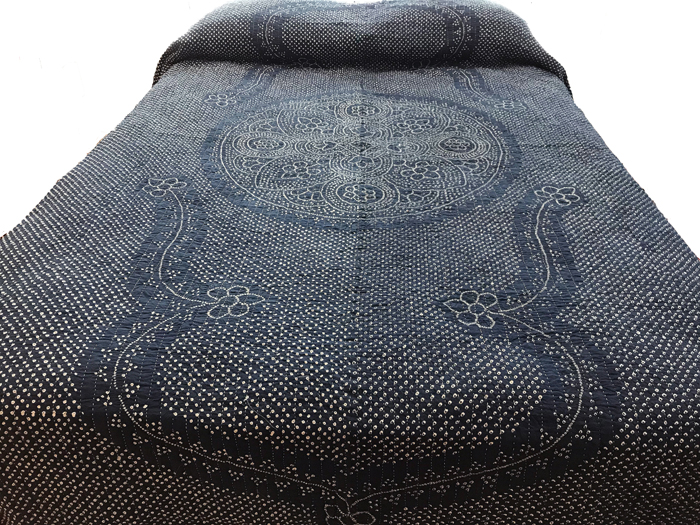
Bandhani with Jabbar Khatri: An ancient way of making pattern on cloth.
Posted by Mary Anne Wise on 28th Apr 2020
You tend to remember where you were when you get the phone call alerting you of your mother’s imminent death. I was in Santa Fe, in a hotel room with a stranger, a man from India. His name was Jabbar Khatri, an internationally acclaimed folk art master. I was in his room to look at his exquisite bandhani-dyed scarves he’d spread out across the room’s bed. I was there trying to decide which pieces I’d buy for the shop. But then the call came and the tears sprang from my eyes and they spilled onto his silks like a faucet and Jabbar, a stranger until that moment, put his arms around me and comforted me. Six years later I am still moved by his humanity. In that moment our friendship was sealed.

Above: Mary Anne, Jabbar and Jody at his workshop January 2020

Above: Jabbar and Sufiyan Khatri visiting us in Wisconsin
Since that day we’ve hosted him at our store in Maiden Rock. Once to teach a class and once to give him a place to rest in between his domestic travel schedule including a gig at the Textile Center in Minneapolis where we connected him to their audience.
We’ve visited him in India a few times, too. We've enjoyed his mom’s cooking, learned about local markets while shopping with his wife, and spent time in his atelier abuzz with activity.

Above: Jabbar's wife Farida showing us around their city- Bhuj.
During a recent trip to visit Jabbar, we learned how bandhani- a special way of applying pattern on cloth- came to the Khatri people- the craftsmen and women of Bhuj in Gujarat. The name “Khatri” means dyer. It is both a family and community name. Legend has it that a ‘fakir’ visited their community (in the Muslim faith, a fakir is a religious ascetic who lives solely on alms). The fakir asked for food and the Khatri families fed him well. In return he gave them a blessing: a handkerchief tied with a knot. Upon leaving, the fakir said “with this blessing you will get your livelihood.” Later, the handkerchief was accidentally dropped into a dye bath but when it was opened everyone noticed how the knot resisted the dye and created a pattern. And that recognition- of how a knot resisted the dye and created a pattern- was the beginning of the wrapped tie and dye technique we now know as bandhani for which the Khatris are famous.
What distinguishes Jabbar is his innovation and his constant searching for ways to apply his technique beyond the traditional cloth-dyed-for-saris application. Together with his brother Abdullah, they have garnered global recognition for their artistry. Find examples of Jabbar’s stunning scarves and bedding below.


Above: left scarve combining bandhani and chikan stitchery, right scarf combining bandhani and kantha stitchery


Above: beautiful bandhani coverlets.

